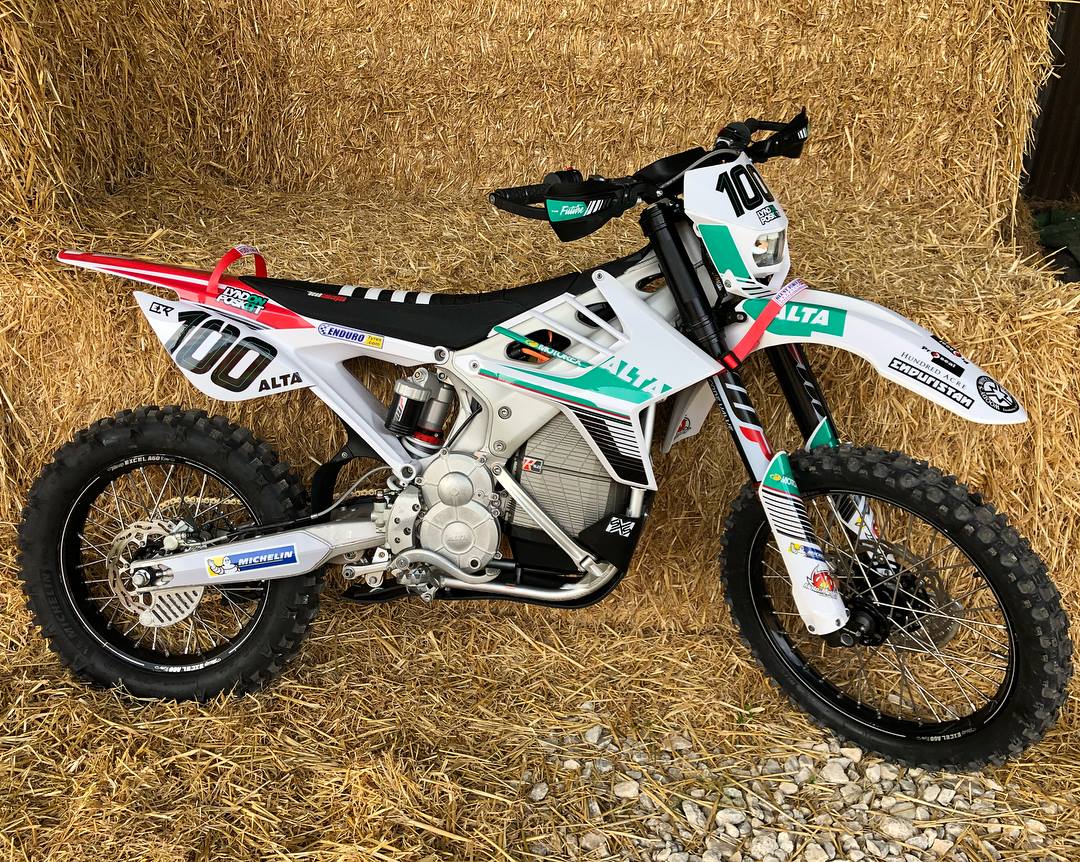Decades of decadence: Yamaha RDs explored
How Yamaha allowed its lunatics to take over the asylum...

ALTHOUGH the age of mass-made two-strokes ended years ago there’s still an unparalleled cachet to a sporty stroker. The sound – and the smell – of a two-stroke is rare these days, but when one rides past it’s enough to bring a cascade of memories and desires to anyone old enough to remember their heyday.
And while most of the big biking brands competed in the two-stroke market, Yamaha’s long-lived RD range – and particularly the legendary RD350 – has a special place in the era’s history.
The RDs weren’t Yamaha’s first two-strokes. The firm had been churning them out since its genesis – the very first YA-1 made in 1955 was a stroker. But with the RD range, starting in 1973, it really hit its stride.
Although there was a full line of RD-badged bikes over the years – from 50cc singles to 500cc fours – the twin-cylinder 250 and 350 models are most fondly recalled. In the UK, learners were able to ride anything up to 250cc on a provisional licence, which meant the relatively high-performance Yamaha RD250 instantly became the dream bike for any 17-year-old aspiring rider.
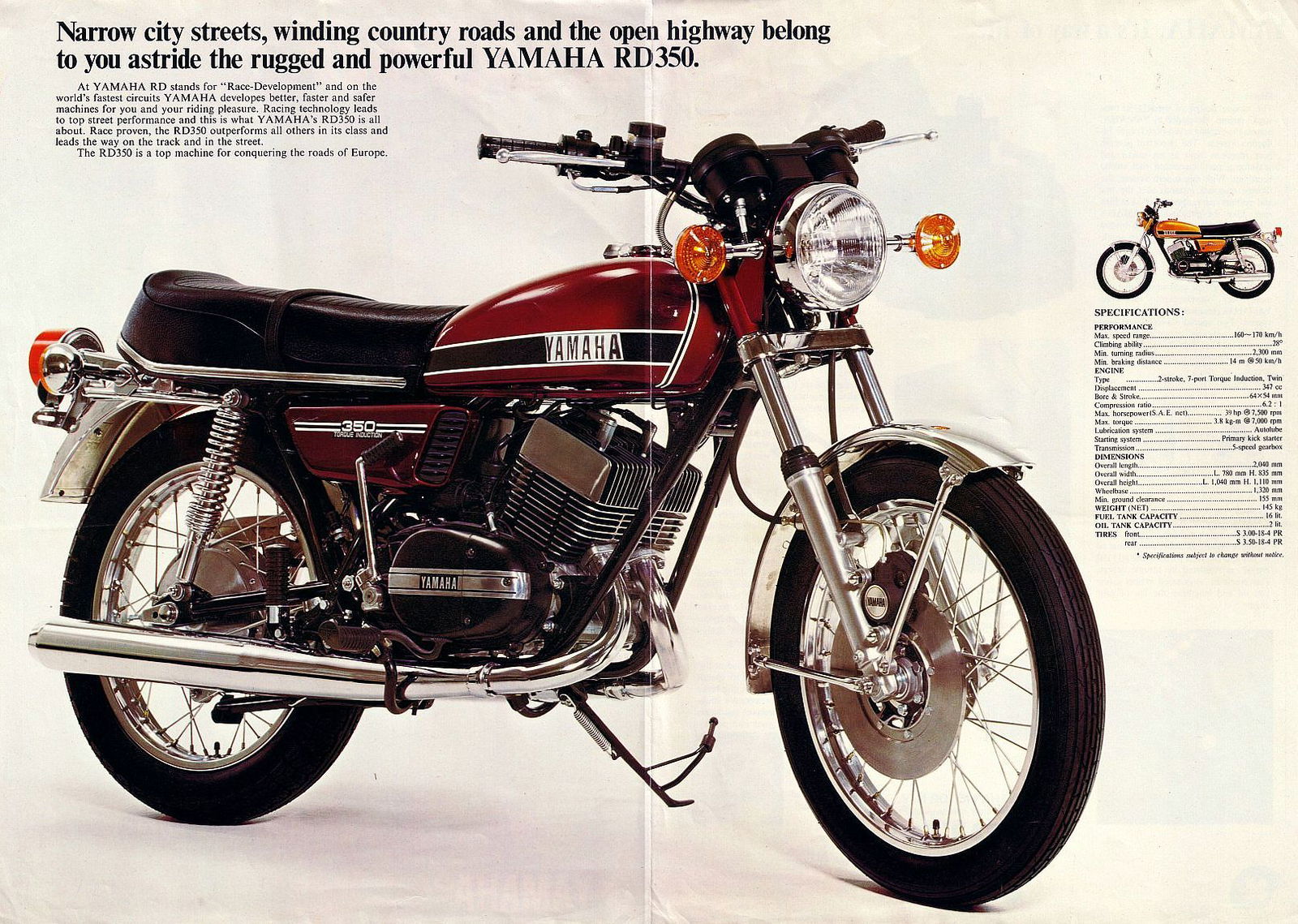
1973: The beginning
Although the RD250 and RD350, which debuted together in 1973, are landmarks for Yamaha, they were actually gradual developments of earlier machines.
The 350cc Yamaha R5 – made from 1970-72 – and the 71-72 250cc YDS7 were near-identical to the RD350 and RD250 that succeeded them, and themselves were evolutions of older Yamahas, with a bloodline dating right back to the 1957 YD-1, the firm’s first twin.
The big change in 73, apart from the new ‘RD’ name – that’s ‘Race Developed’, by the way – was the adoption of reed valves. The change helped the RD350 get to around 39hp, while the smaller RD250 hovered somewhere around the 30hp mark. A front disc brake was soon added to reflect their increased performance, although some very early RDs still had their predecessors’ drums.
Capacity aside, the RD250 and RD350 shared as many parts as possible. The real difference was bore; the RD250 had a square bore/stroke – 54mm x 54mm – while the RD350 used a 64mm bore with the same 54mm stroke.
Another upgrade over their piston-port two-stroke predecessors was the six-speed gearbox on the RD machines. Both the R5 and YDS7 had five-speeds. Weirdly, though, early UK-market RDs had their sixth gear blanked off; it was still there, inside the box, but you needed to dismantle the transmission and remove a blanking plate to access it, as well as adding a larger rear sprocket to ensure your newly-unleashed sixth didn’t become a useless overdrive ratio.
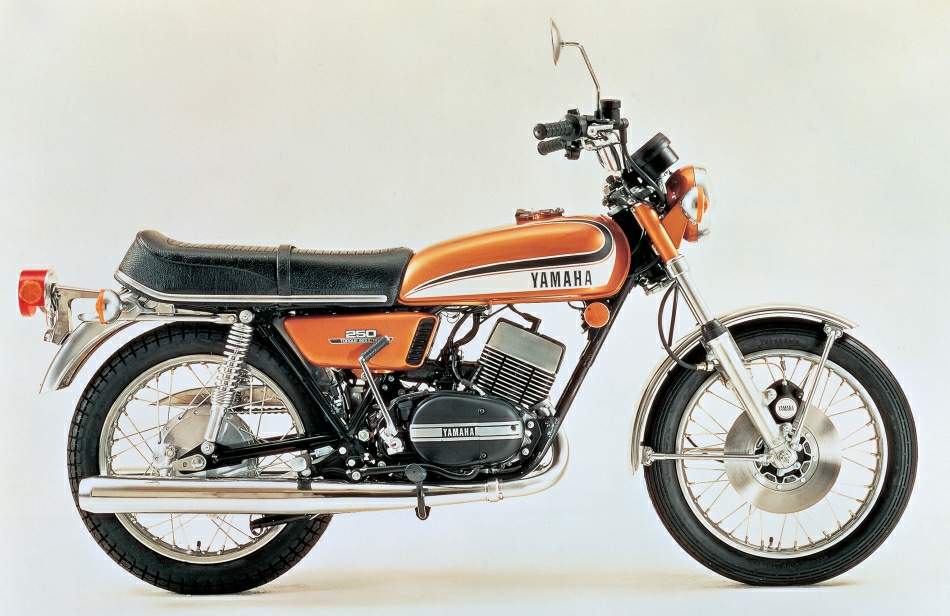
1976: Evolution
The first big visual change for the RD line came in 76, when a squared-off ‘coffin’ tank replaced the curvy original design. But the more notable update was the fact that the RD350 was gone – replaced with the up-engined RD400.
The extra 50cc came by way of a new crankshaft, which upped the larger bike’s stroke from 54mm to 62mm. Power rose to 44hp, but the more important was the torque increase – it rose spectacularly from 24lbft to 30lbft and helped make the RD400 a much less peaky machine to ride.
On the chassis side, a rear disc – at 267mm it’s identical in size to the front one – was added to both the 250 and the new 400, while cast alloy wheels became an option alongside the standard wires. Most ticked that box.
In 1977 a small styling tweak saw the addition of a rear cowl around the seat, and alloy wheels became standard on the RD400. By 78 they were standard on the 250, too.
So far, it was a case of step-by-step improvements, but a major change was just around the corner...
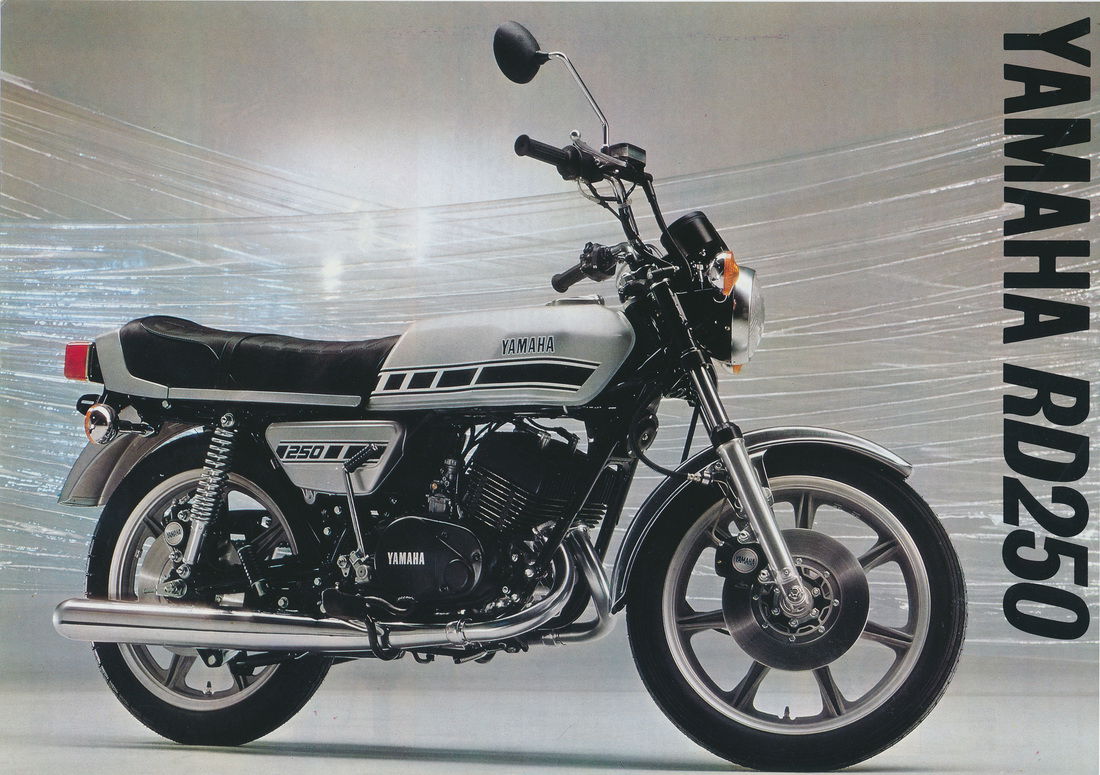
1980: All change
The RD250 and RD350 had already made names for themselves by the time the 1979 models went out of production, but the 1980 replacements were to make a huge leap forward; Yamaha added water.
Far from diluting the recipe that made the RDs successful, a splash of liquid turned them into the ultimate early-80s hooligan sports bikes.
Suddenly, these were modern bikes. Forget that 1960s lineage of the original RDs, the new ‘LC’ (liquid cooled) RDs were as close as you could get to road-going versions of the TZ250 and TZ350 racers.
With 35hp, the new RD250LC was as quick as the old RD350 had been, with a top speed of over 100mph. Bear in mind that you could still ride one with nothing more than a provisional licence and L-plates in the UK, and it’s easy to see why questions were soon being asked as to the wisdom of allowing learners to ride 250cc bikes.
The engine’s internal dimensions were the same as before – 54mm x 54mm for the 250, 64mm x 54mm for the 350 – but the bigger bike’s power was now up to 47hp at 8500rpm. With a wet weight of only 155kg, that was a recipe for impressive performance in its day.
And it wasn’t just the engine that changed. Yamaha also adopted a race-style chassis, including a monoshock rear end. While it’s easy to see a 1980 RD350 as little more than an old bike these days, when it was new it represented the cutting edge of race bike tech, transplanted to the street in an affordable package.
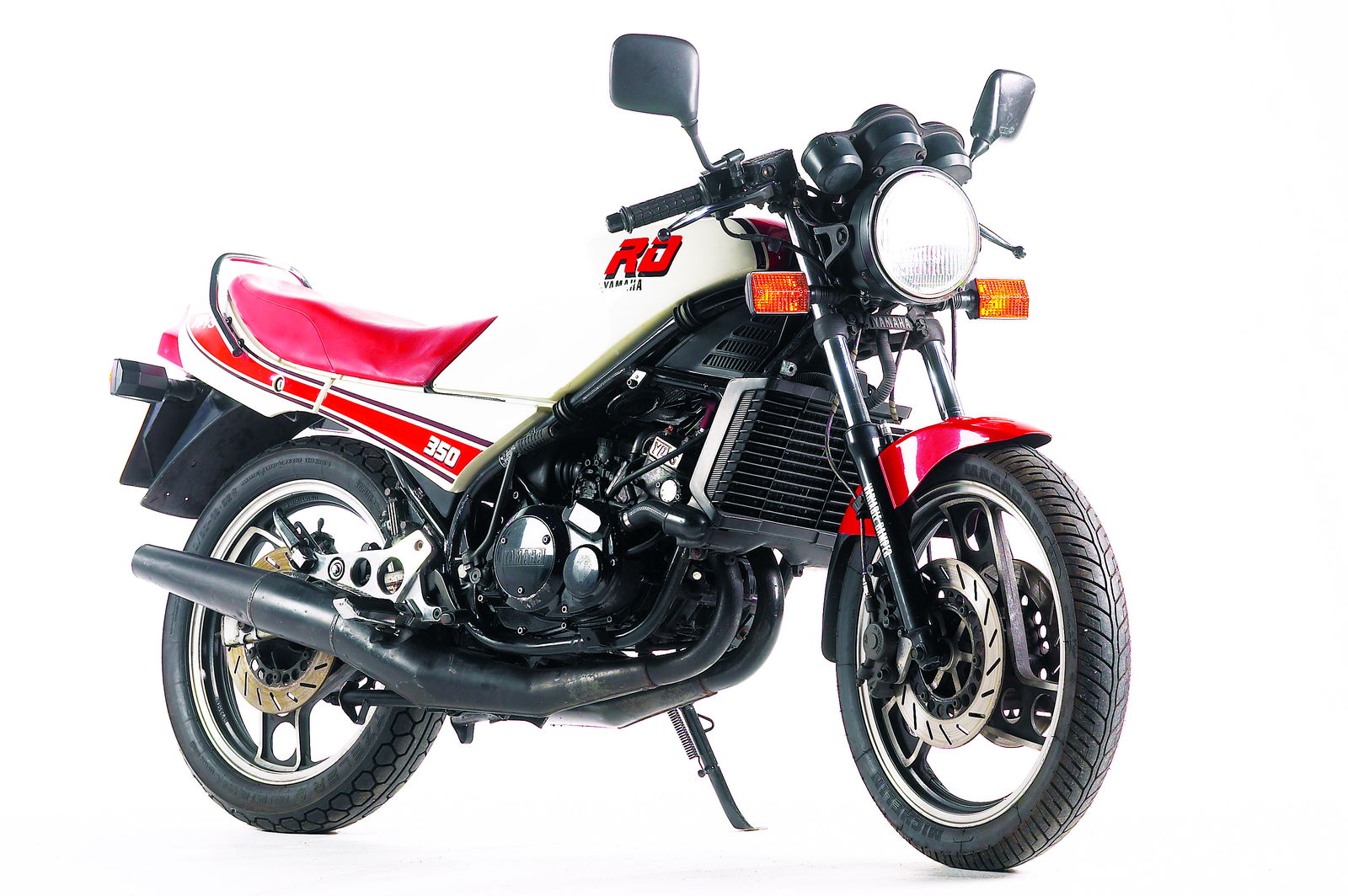
1983: Power valve
Given the leap that the RD350LC represented you might have forgiven Yamaha for having a breather, but development of the two-stroke showed no sign of abating. Just three years after the water-cooled RDs emerged, Yamaha added the now-legendary YPVS power valve system.
Suddenly, the RD250’s power increased to 46hp – basically the same as the previous year’s 350 – and the RD350’s output was upped to a heady 59hp. At the same time, the styling was revised to give a much closer link to the old TZ race bikes.
A servo controlled by a rudimentary engine management system altered the height of the engine’s exhaust ports as revs rose, adding a big dose of top-end power but without the downside of a narrow power band, as you’d have with a fixed-position exhaust port tuned for outright performance. The system had already been well proven in racing, where Yamaha had been using it since the late 70s.
Perhaps sensibly, given that the RD250 was now faster than the RD400 had been just a handful of years earlier, the UK government slashed the capacity limit for learners from 250cc to 125cc in 1983…

1985: Throw a fairing on it
When the RD’s lineage began, fairings were something that only race bikes used. But by 1985 we were seeing a revolution in sports bike design. The GSX-R750 had appeared, for a start, as had machines like Honda’s NS400R. Suddenly the RD looked like it needed something new to bring it back into contention.
The RD350F (and, in some markets, the RZ350R) was the solution. ‘F’ stood for full fairing, and that’s exactly what the ‘F’ model got, replacing the small headlight shroud used on its predecessor. For those still sceptical of this new-fangled aerodynamics, Yamaha also released the RD350N, with a simple, round headlight and no front bodywork at all. These days it would probably be labelled a streetfighter or a cafe racer. Back then it was just a motorcycle.
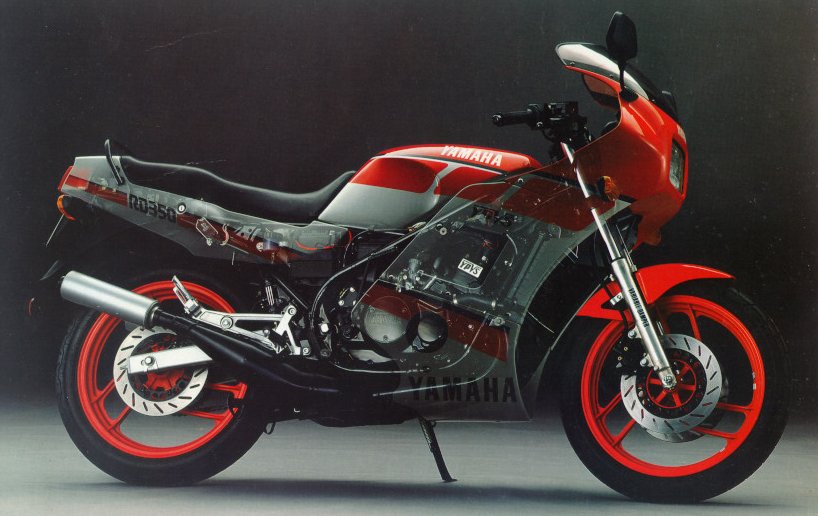
1986: Another update already?
Yes, but it would be the last for a while. The RD350F and N models didn’t get a long life; after a single year they were superseded by the imaginatively-titled F2 and N2 versions.
By now, the RD250 had reached the end of its life. The arms race around the 250cc class was starting to heat up, and the aluminium beam-framed TZR250 appeared as the RD250’s replacement.
In 1986 RD350LC production started to shift from Japan to Brazil, cutting costs and helping Yamaha start to reposition the bike as a simpler sports bike sitting below the exotic, expensive alloy-framed machines that were starting to become the norm.
For 86, power increased again – up to 63hp – and the tail unit was redesigned for a sportier style. Most examples were the faired F2; the naked N2 also got the new seat, but was only sold in certain markets. It was discontinued soon after its introduction.
However, the RD parallel twin wasn’t Yamaha’s leading lightweight sports bike anymore, and with the shift to Brazilian production, it got left in a development black hole. It would be another five years before an update – a new twin-headlight fairing – and by then power was starting to decline.
While other markets dropped the RD, the UK remained loyal to a bike that had provided so many of its riders with an entry to sports bike ownership. The last RD350s were sold here in 1995, with power back down to 59hp by then...
1984-1986: The RD500LC
The RD250 and RD350 might have moulded whole generations of riders through the 1970s and 80s, but another machine wearing the RD badge remains the most desirable of the bunch. It’s Yamaha’s four-cylinder grand prix replica, the RD500LC.
Rewind to the mid-1980s and Japan’s motorcycle manufacturers were on the warpath, battling tooth and nail to offer the most extreme, high-tech machines imaginable. An arms race to create the fastest, best-handling sports bike led to simultaneous developments in multiple directions. At the same time as they were working on the multi-cylinder, alloy-framed four-strokes that would eventually come to dominate, the main Japanese players also played with turbocharged bikes and, as seen here, big-capacity two-stroke GP replicas.
Yamaha’s RD500LC was as close as any of us could get to owning the YZR500 that was competing on track. The firm had introduced the V4-powered YZR – the OW61 – back in 1982; the first V4 two-stroke GP bike, it laid down a template that all its rivals would soon follow. Just two years later, the road-going RD500LC gave road riders the chance to experience something similar.
The RD’s 50-degree V4 used two crankshafts, the YPVS power valve system and reed valves, which were only introduced to the GP bike in the same year as the RD arrived. In fact, thanks to the twin-crank design, it’s engine is a bit like two TRZ250 parallel twins, geared to work together.
By hitting the market in 1984, Yamaha beat its rivals to the punch. The square-four-powered Suzuki RG500 and Honda’s V3-engined NS400R wouldn’t arrive until 1985.
In terms of styling, the RD took 1983’s OW70 GP bike as its template, making it an up-to-date effort at the time. Sadly Yamaha didn’t borrow that bike’s aluminium Deltabox frame, though – doing so would have helped in the upcoming battle with the alloy-framed Suzuki and Honda road bikes that would appear a year after the RD500LC’s debut.
Not that the chassis wasn’t innovative; Yamaha created a rear suspension linkage to position the rear shock horizontally under the engine, freeing up space for the exhausts from the V4’s rear cylinder bank to exit under the seat. Next time someone tells you that the Honda NR or Ducati 916 were the first bikes with under-seat pipes, remind them of the RD that came nearly a decade earlier…
The steel-framed RD500 would always be a little heavy compared to its rivals; wet, with fuel and oil, the bike is said to weigh as much as 216kg. Power was also a little low, with around 88hp – somewhat less than the 140hp that the GP bikes that shared the same engine configuration offered.
In 1985, after just one year of production, updates to the RD500LC included a significantly reworked engine, with its balancer shaft modified and driven from the rear crankshaft rather than the front one. However, even this ‘MK2’ version wasn’t enough to seriously extend the RD500’s life, and by the end of 1986 Yamaha’s brief foray into road-going GP replicas was at an end.
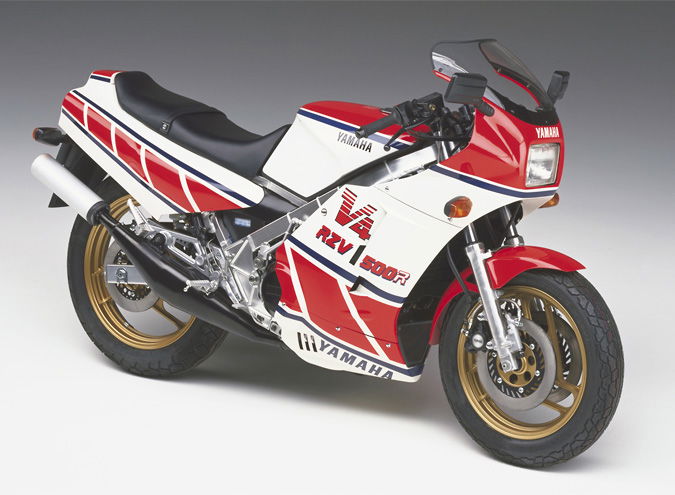
The ultimate RD – the RZV500R
Given that the main complaints levelled against the RD500LC were that its steel frame wasn’t at the same bleeding edge of technology that it’s alloy-framed rivals explored, it’s a shame that the firm didn’t opt to widely offer the Japanese-market RZV500R. Why? Because although it looked almost identical to the RD500LC, the RZV500R was actually a much more exotic beast.
The big change was the chassis. The RZV500R – of which just 1600 examples were made – featured a hand-welded aluminium frame that helped slice around 10kg off the overall weight of the bike (Yamaha puts it at 173kg dry). To go with that exotic frame there was also higher-spec, adjustable forks.
On the down-side, thanks to its Japanese-market rules, the RZV500R’s engine was limited to a mere 64hp with different jetting and restrictor plates in the exhaust. That’s easily remedied, though.
